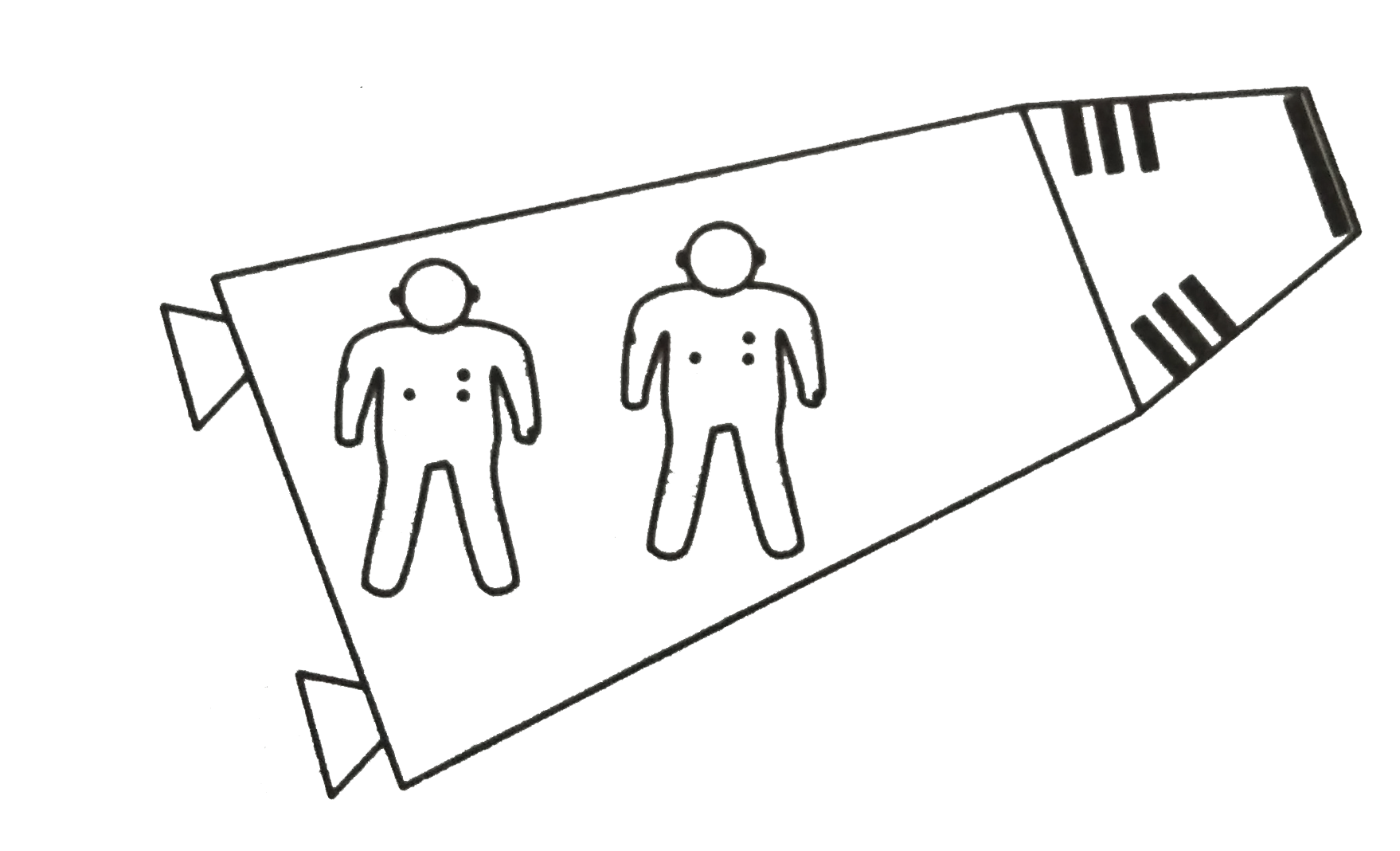Three particles of masses 20g, 30g and 40g are initially moving along the positive direction of the three coordinate axes respectively with the same velocity of 20cm/s. When due to their mutual interaction, the first particle comes to rest, the second acquires a velocity (10ˆi+20ˆk)cm/s. What is then the velocity of the third particle?
2ˆi+3ˆj+4ˆk
2.5ˆi+15ˆj+5ˆk
2.5ˆi+10ˆj−5ˆk
2ˆi−3ˆj−4ˆk
The correct Answer is:B
P1=20×20ˆi,P3=40×20ˆk
P2=30×20ˆj
P1=P1+P2+P3=Pf
⇒400i+600ˆj+800ˆk=30(10i+20ˆk)+40v
get V=100i+600ˆj+200ˆk40
=2.5ˆi+15ˆj+5ˆk
Topper's Solved these Questions
Similar Questions
Three interacting particles of masses 100g,200g and 400g each hace a velocity of 20m/s magnitude along the positive direction of x-axis, y-axis and z-axis. Due to force of interaction the third particle stops moving. The velocity of the second particle is (10ˆj+5ˆk). What is the velocity of the first particle ?
View SolutionA particle is moving along a circle of radius 20cm, with a linear velocity of 2m//s. Calculate the angular velocity of the particle.
View SolutionA particle is moving along a circle of radius 20cm, with a linear velocity of 2m//s. Calculate the angular velocity of the particle.
View SolutionA particle moves with a uniform velocity of 50 m/s for 20 min. What is the velocity of particle at t = 2 min ?
View SolutionThe velocities of three particles of masses 20 g, 30 g and 50 g are 10ˆi, 10ˆj and 10ˆk respectively. The velocity of the centre of mass of the three particles is
View SolutionA particle moves in a straight line for 20 seconds with velocity 3 m/s and then moves with velocity 4 m/s for another 20 seconds and finally moves with velocity 5 m/s for next 20 seconds. What is the average velocity of the particle ?
View SolutionA particle of mass 20g experiences a gravitational force of 4.0N along positive x - direction. Find the gravitational field at that point.
View SolutionTwo objects of masses 100g and 200g are moving along the same line in the same direction with velocities of 2m/s and 1m/s, respectively. They collide and after the collison, the first object moves at a velocity of 1.67m/s in the same direction. Determine the velocity of the second object.
View SolutionTwo balls of equal masses are thrown upwards, along the same vertical direction at an interval of 2 seconds, with the same initial velocity of 40m/s. Then these collide at a height of (Take g=10m/s2).
View SolutionA block at rest explodes into three equal parts. Two parts start moving along X and Y axes respectively with equal speeds of 10 m/s. Find the initial velocity of the third part.

View Solution
